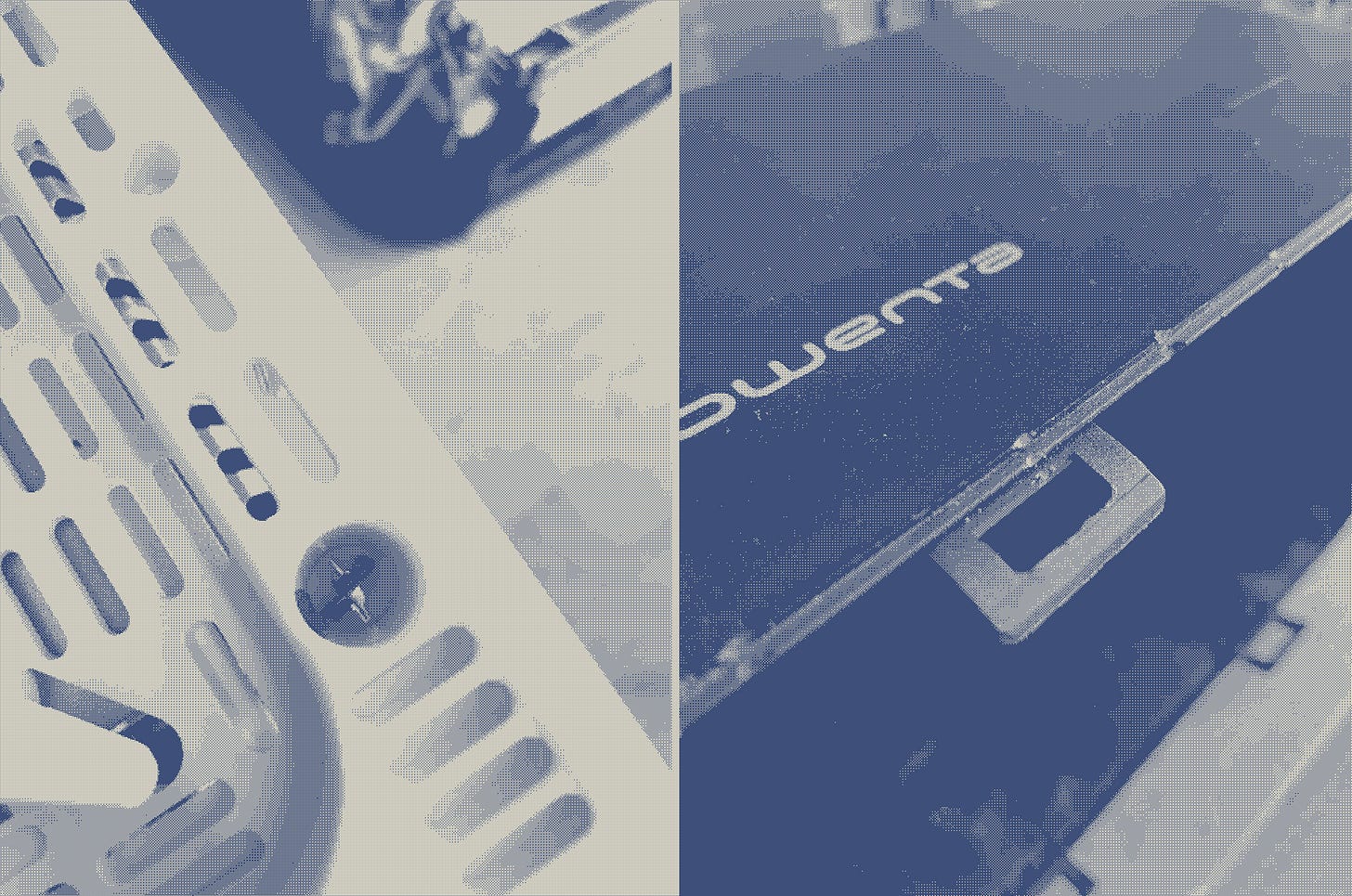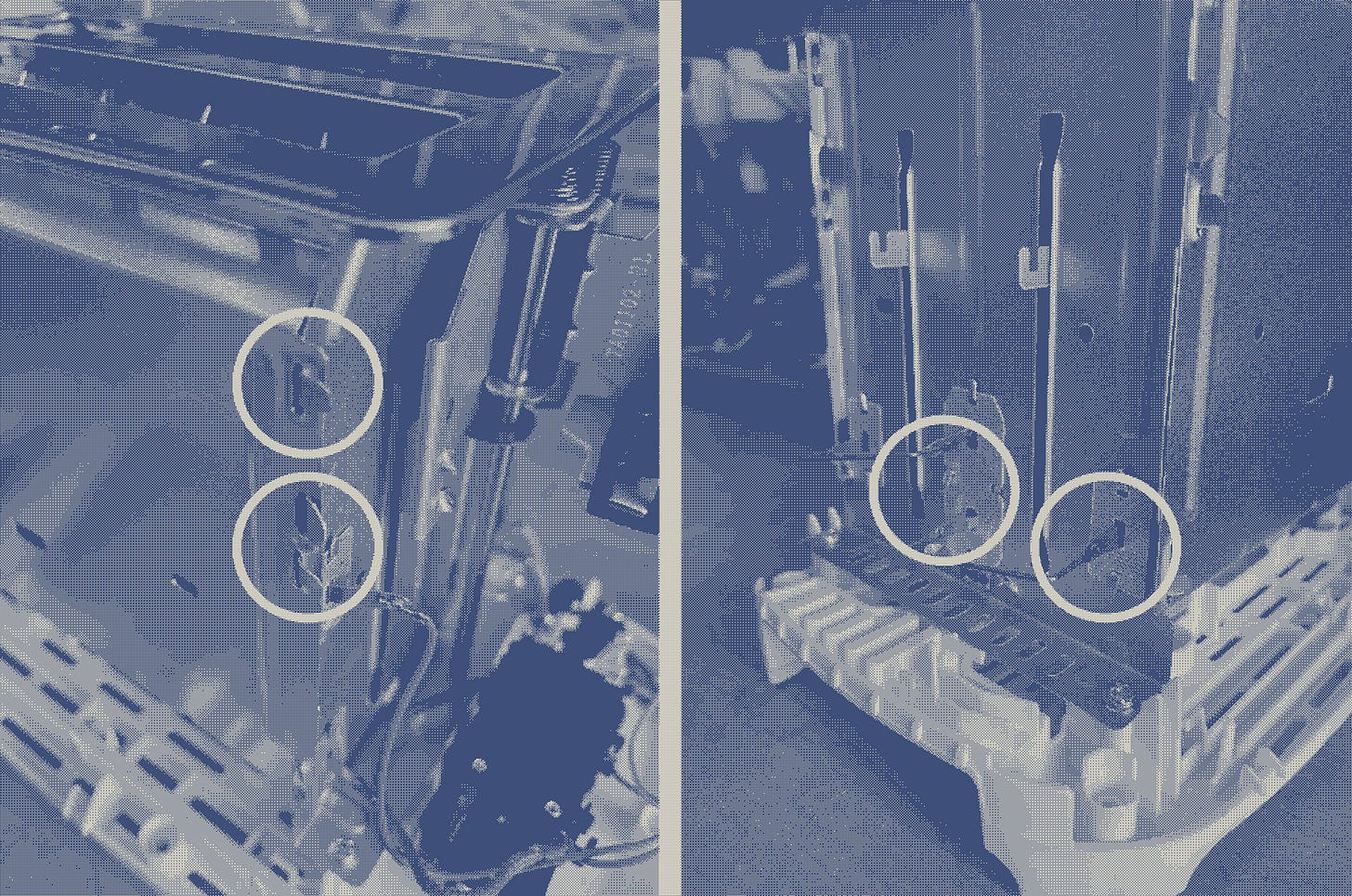Naked toasters
Turns out, under their clothes, they're all the same. And it doesn't look pretty.
One of the first things we wanted to understand in our endeavour to create a 100 year toaster is how existing toasters are made. So we bought a bunch of broken toasters from eBay, shelled out for this £8.99 beauty from Curry’s, brought in a few of the team’s own toasters, and got to work stripping them down.
The first thing that’s apparent is that the average toaster is a tough nut to crack. Plastic hooks, twisted sheet metal feet, and obscure screw heads make getting their cases off a lengthy and frustrating challenge. Is this a sinister anti-fixer conspiracy by Big Toast? Probably not. It feels to us like something more banal: in the obsessive pursuit of cost efficiencies at scale, repairability has just fallen by the wayside.

When you do finally get inside, what’s striking is that the guts of most toasters are fundamentally identical. They all feature a case made of sheet metal, a jangly wire cage within each slot, nichrome wire heating elements, and a solenoid-based lift mechanism. Whether you’ve splashed out £200 for a SMEG or picked up an own-brand toaster for less than a tenner, the majority employ the same core functional design and manufacturing processes. Many are probably made by the same factories. The only discernible difference on the internals is the quality of materials used, such as thicker sheet metal in “premium” branded toasters.
Irrespective of price, the repair-resistant design choices continue on the inside. Folded metal tabs, soldered connections, hard-to-reach screws, and inaccessible integrated electronics. So when you shell out for a high-end toaster, that extra money is in most cases just buying you a fancier casing (such as SMEG’s heavy die-cast outer shell) and a posher brand. At core, it’ll still be designed to be disposable, and suffer from the same points of failure as much cheaper options. This matches what a team from Ohio State University found in collaboration with Wirecutter in their tear-down of a range of toasters. Their conclusion was that “modern toasters are the kitchen equivalent of printers—everything in the category is pretty crappy”.

One notable exception is the high-end Dualit “Classic” range. Handmade in the UK and designed with repairability in mind, they’re industrial-looking beasts that feature pared down electronics, mechanical timer and a simple lift mechanism. Still not the easiest to take apart, but they do feature replaceable heating elements, thanks to their (cue infomercial voice) patented ProHeat® technology. But even Dualit has not been able to resist making McToasters: their mid- and low-end toasters are plastic-heavy, and have the same repair-resistant construction as all the others we looked at.
A final unnerving observation from our tear-downs: whatever the toaster, if it’s been in use for any length of time, it’s probably filthy on the inside. James shook a second-hand Kenwood and a stream of what looked like whole charred cranberries fell out. The insides of his own Dualit Classic were caked in ancient seeds. Chances are that even with a crumb tray, your toaster is hiding a lot of nasty old bits of food. So that’s at least one reason not to open up your toaster - if you don’t know it’s dirty, maybe you don’t have to clean it…? 🤷




You may now be the world's foremost expert in toaster innards. Who'd have thought you'd get to add that to the resume? Biggest surprise: even the "upscale" toasters have roughly the same insides. Can't wait to see the pristine insides of the 100 Year once it's out the door. Can I get mine in clear? :)